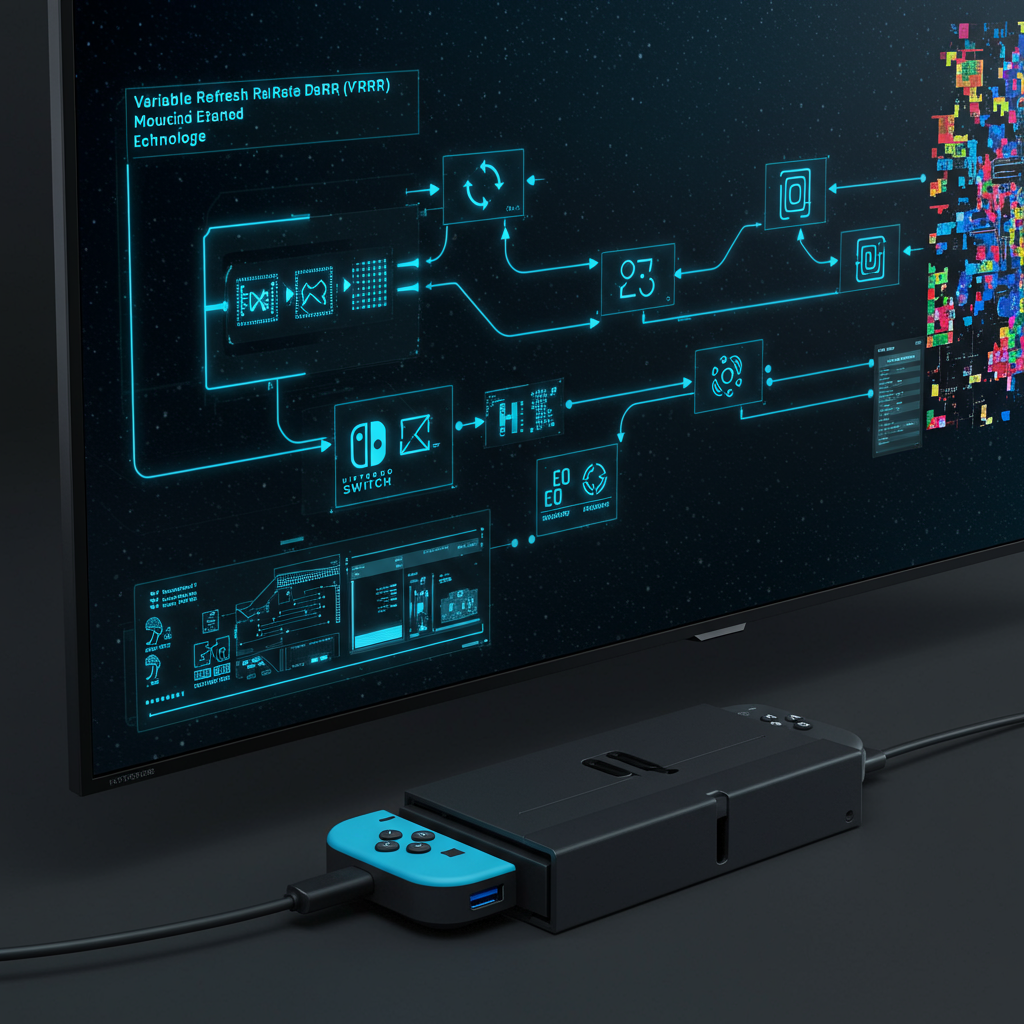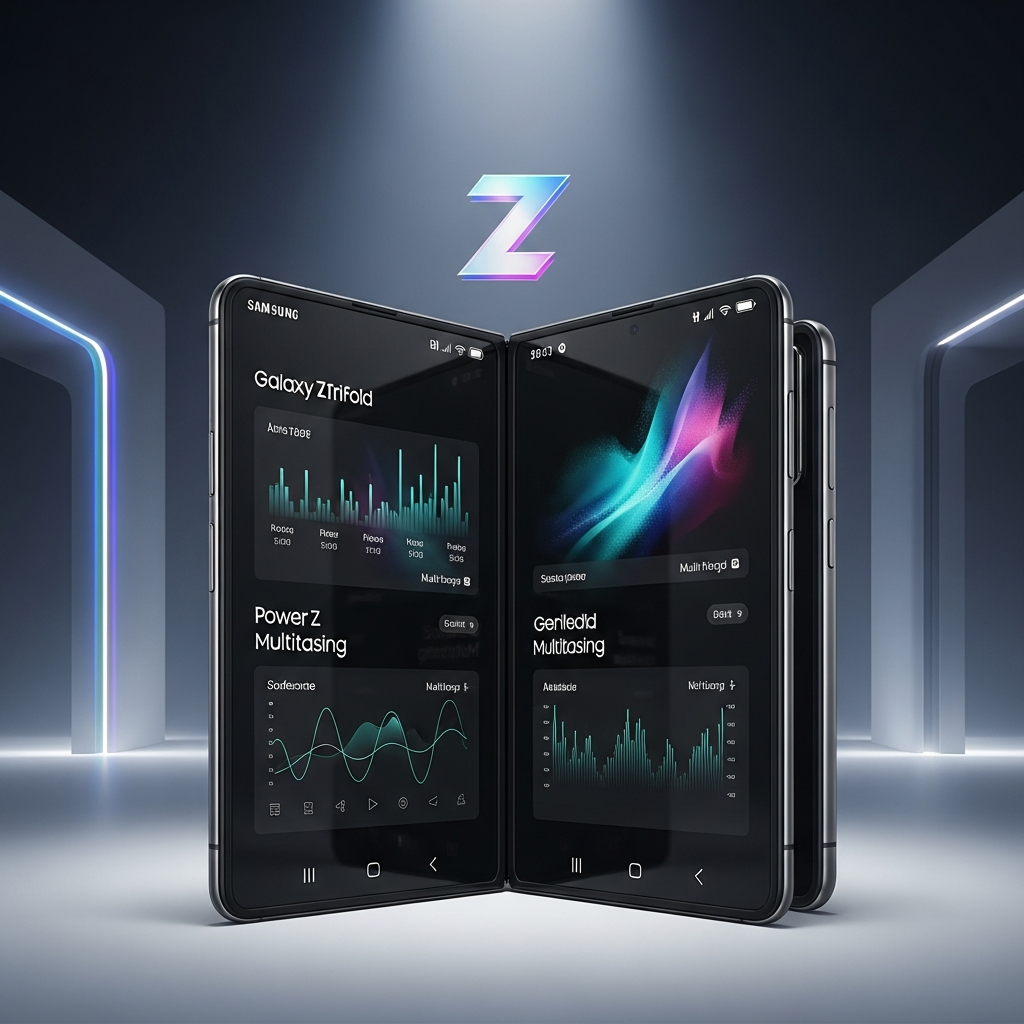A strange technical puzzle surrounds the Nintendo switch 2: It supports Variable Refresh Rate (VRR) in handheld mode, but Nintendo states it doesn’t work when docked to your TV. This is despite initially advertising docked VRR support, only to later apologize for “incorrect information.” Our investigation confirms the official Switch 2 TV dock hardware is actually capable of passing through a VRR signal. So, why isn’t Nintendo enabling this crucial display feature for big-screen gaming on the Switch 2?
Variable Refresh Rate (VRR) is a modern display technology found in many new TVs and monitors. It helps eliminate screen tearing and reduce stuttering by allowing the display’s refresh rate to sync dynamically with the game’s fluctuating frame rate. For gaming systems where performance can vary, like the Nintendo Switch 2, VRR can make a significant difference, leading to smoother visuals and a more responsive feel, especially when frame rates dip below the target 60fps.
Nintendo’s official communication around Switch 2 VRR has been confusing. Early mentions on their website listed support for VRR when connected to compatible TVs, alongside features like HDR and 120fps output. However, these references to docked VRR gradually disappeared from Nintendo’s sites. By mid-May 2025, Nintendo issued a formal apology, clarifying that the Switch 2 only supports VRR in handheld mode. They stated the prior information about docked VRR was an error.
The Surprising Proof: Switch 2 Dock Can Do VRR
Despite Nintendo’s official stance, independent testing reveals a key piece of information: the official Nintendo Switch 2 dock itself is capable of supporting VRR output. Sean Hollister from The Verge confirmed this by plugging other VRR-capable PC handhelds into the Switch 2 dock.
Using a USB-C extension cable to connect devices like a Steam Deck, a Lenovo Legion Go S running SteamOS, and an Asus ROG Ally X running Bazzite to the official Switch 2 dock, these rival handhelds successfully outputted 4K resolution at 120Hz with both HDR and VRR enabled. Testing with the open-source VRRTest tool confirmed that VRR was actively working, providing smooth visuals even as frame rates fluctuated.
This testing provides technical evidence: the official Nintendo Switch 2 dock hardware doesn’t seem to be the limitation preventing VRR output to a TV. It can physically pass the signal. The question then intensifies: if the Switch 2 console supports VRR (in handheld) and the dock hardware is capable, why does Nintendo restrict VRR to handheld mode only for the Switch 2 itself?
Why the Disconnect? Potential Explanations
Nintendo has offered no public technical explanation for the lack of docked VRR support, beyond stating that the initial mention was an “incorrect information” error. When asked if docked VRR might be added via a future update, their standard response is “nothing to announce on this topic.” This leaves the exact reasons open to speculation.
One possibility is that Nintendo feels the Switch 2’s performance in certain demanding games isn’t consistently robust enough to maintain frame rates within a desirable VRR window when displayed on a large TV screen. VRR works best within a specific frame rate range (e.g., 48fps to 120fps). If games frequently dip below that lower threshold, VRR benefits diminish. Digital Foundry previously noted some “clear problems” with the Switch 2’s handheld VRR implementation in certain third-party titles like Cyberpunk 2077 and No Man’s Sky, where judder was still observed, even if Nintendo’s own demos showed proper VRR. This could suggest ongoing software implementation challenges, though it doesn’t definitively explain the complete absence of docked VRR.
Digital Foundry’s Rich Leadbetter has indicated he hasn’t heard a compelling technical reason why docked VRR couldn’t work from a hardware perspective. This strengthens the idea that the limitation is either strategic, related to software stability, or simply wasn’t prioritized for launch.
Nintendo might also be taking a cautious approach to avoid potential compatibility issues with the vast array of VRR-capable TVs on the market. Ensuring a smooth, consistent experience across numerous display types can be technically complex. Restricting the feature to the console’s single, known internal display simplifies development and support at launch. This aligns with other examples of Nintendo’s controlled approach to external peripherals and features, like the initial semi-locked-down USB-C video output and early webcam compatibility issues seen around the Switch 2’s launch.
Ultimately, without a technical explanation from Nintendo, the precise reason remains a mystery. The hardware capability appears to be there, the core feature is present on the console (handheld), yet the official support for TV output is missing.
Benefits Docked VRR Could Offer
Implementing VRR for docked mode on the Switch 2 could significantly improve the gaming experience for users with compatible TVs. Many Switch 2 games, particularly more ambitious third-party titles or even demanding first-party games, may not consistently hit a locked 60fps when played on a TV.
Games that target 30fps but sometimes drop, or those that aim for higher frame rates but fluctuate (say, between 45fps and 60fps), would greatly benefit. Instead of experiencing noticeable stutters or screen tearing when the frame rate doesn’t perfectly match the TV’s refresh rate (e.g., 60Hz), VRR would smooth out these variations. This would lead to more fluid motion and reduce visual distraction, making gameplay feel smoother and more responsive even when the system is pushing its limits. For titles like the reported Cyberpunk 2077 port or demanding upcoming games, docked VRR could provide a welcome boost to perceived performance.
While Nintendo hasn’t committed to adding docked VRR support, the possibility exists that it could be enabled later via a system firmware update, similar to how features like VRR were added to other consoles post-launch (like the PlayStation 5). However, based on Nintendo’s current “nothing to announce” stance, gamers hoping for this feature at launch will be disappointed. The proven capability of the dock hardware simply makes the console’s current limitation more puzzling.
Frequently Asked Questions
Does the Nintendo Switch 2 support VRR when connected to a TV?
No, officially, the Nintendo Switch 2 does not support Variable Refresh Rate (VRR) when connected to a TV via its dock. Nintendo has clarified that VRR is supported only in handheld mode and has apologized for initially stating otherwise on their website.
How was it confirmed that the Switch 2 dock supports VRR?
Testing conducted by The Verge confirmed the dock’s capability. By connecting other VRR-capable PC handhelds (like the Steam Deck, Legion Go S, and ROG Ally X) to the official Switch 2 dock using a USB-C cable, they were able to successfully output video signals with 4K resolution, 120Hz refresh rate, HDR, and VRR enabled simultaneously to a compatible TV. This demonstrated the dock hardware could pass the necessary VRR signal.
Why would docked VRR support benefit Nintendo Switch 2 gameplay?
Docked VRR support would benefit gameplay by smoothing out visual performance in games where the frame rate fluctuates, which is common on systems like the Switch 2 running demanding titles. Instead of experiencing distracting stutter or screen tearing when the frame rate doesn’t perfectly match the TV’s refresh rate, VRR synchronizes the display, leading to more fluid motion and a subjectively smoother experience during gameplay.
The Nintendo Switch 2’s VRR situation remains a peculiar technical footnote around its launch. Despite the core technology being present on the console (in handheld) and the official dock hardware being proven capable of passing the signal, Nintendo has chosen not to enable docked VRR output. Whether this is due to unresolved software issues, performance targeting concerns, or a strategic decision to simplify the launch, the potential for smoother big-screen gameplay via VRR currently remains untapped, leaving users to wonder if this is a feature that might arrive later or one Nintendo intends to keep limited.




